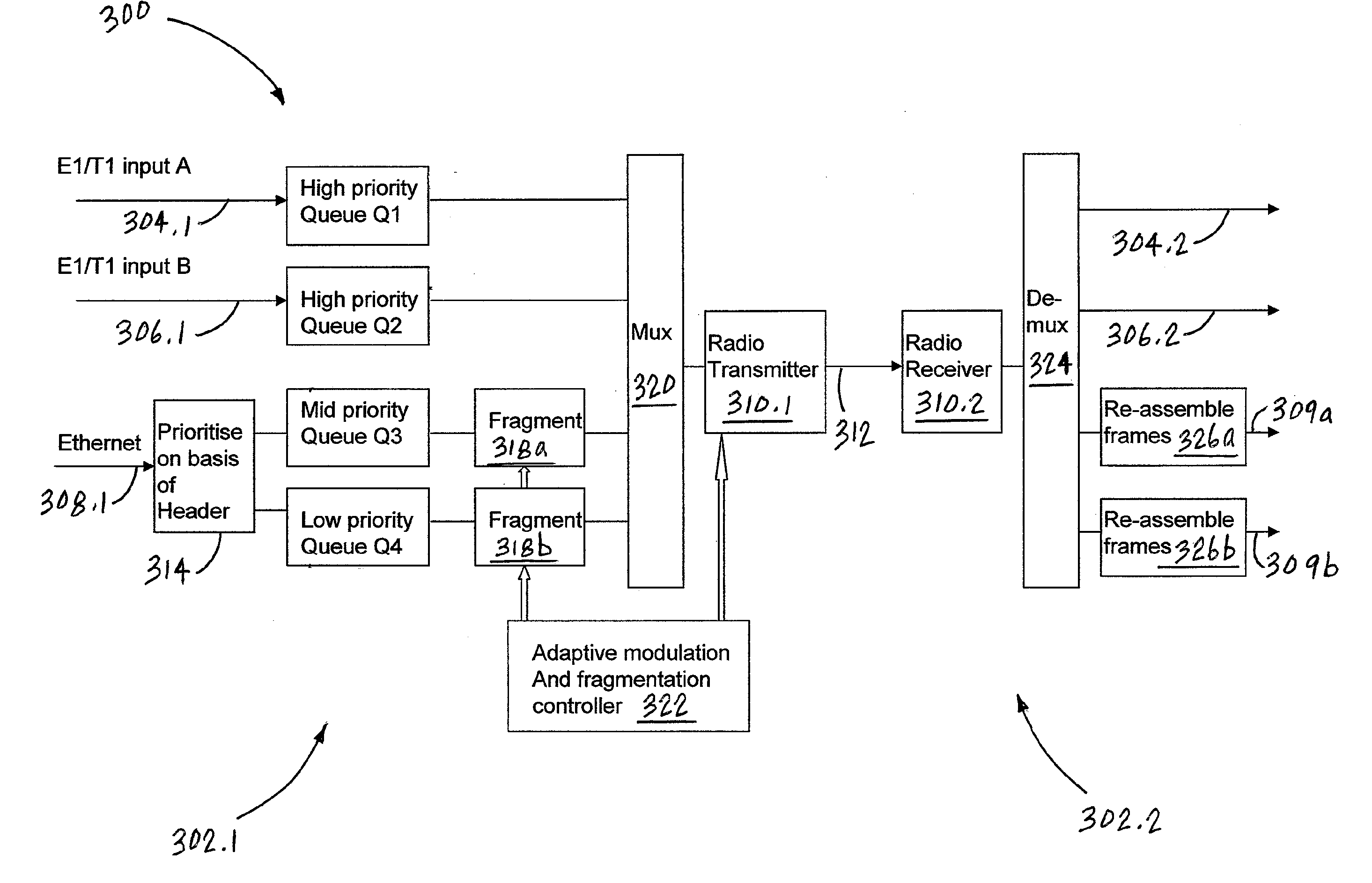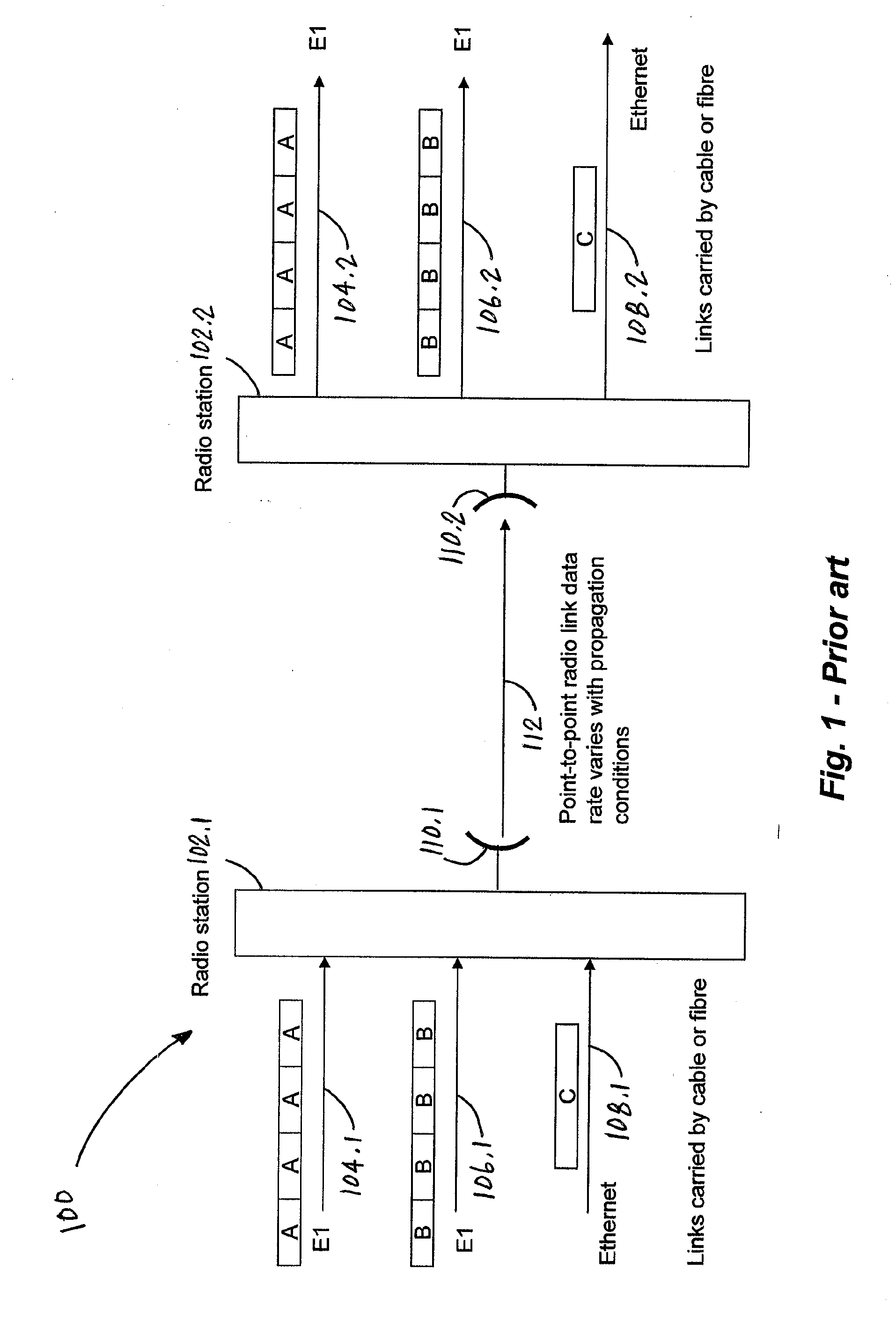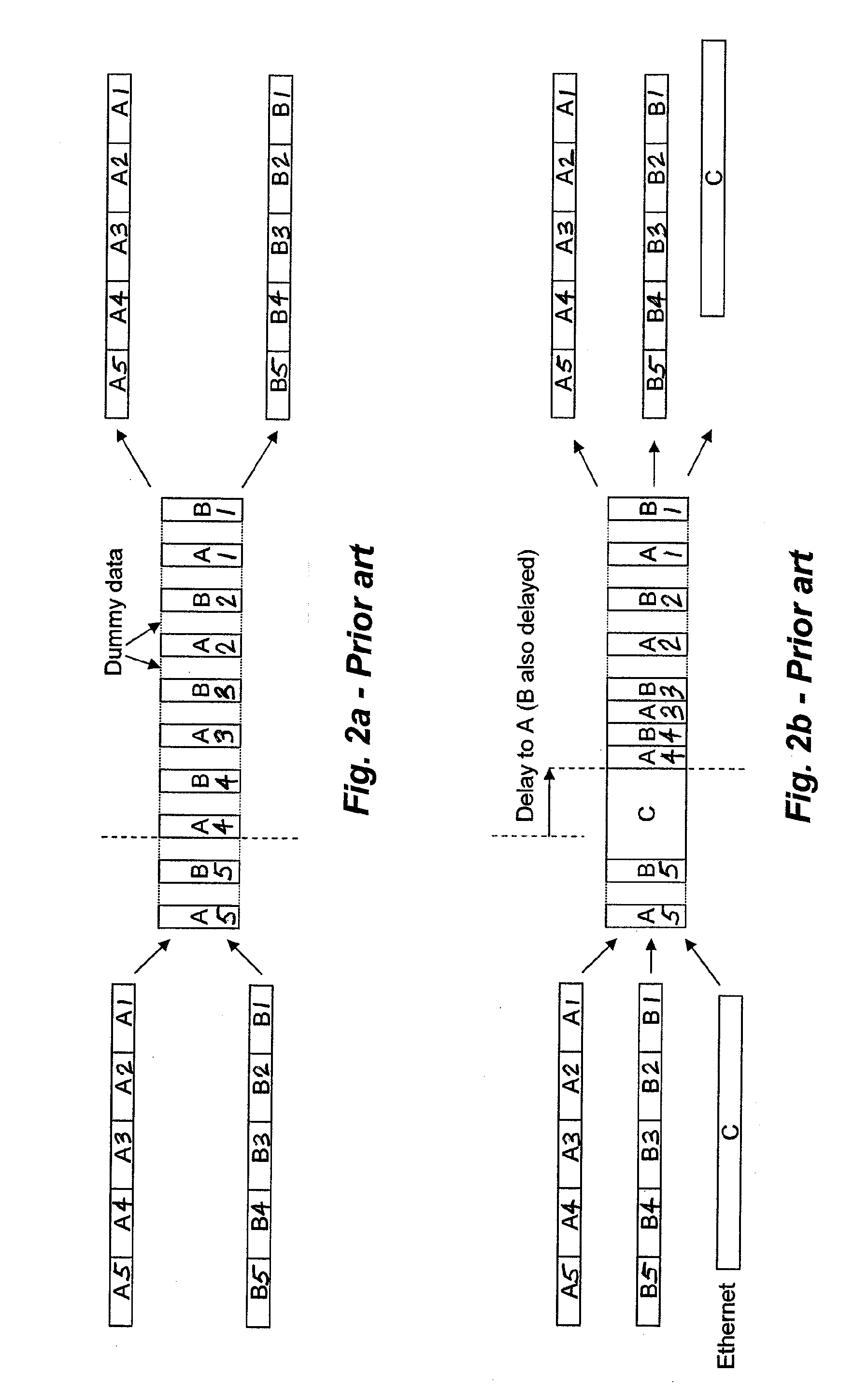Latency reduction by adaptive packet fragmentation
a packet fragmentation and packet technology, applied in the field of wireless broadband communications systems, can solve the problems of over-described conventional wireless communications systems for transmitting multiple data steams over tdd point-to-point radio links, affecting the speed of data transmission, and affecting the quality of data transmission
- Summary
- Abstract
- Description
- Claims
- Application Information
AI Technical Summary
Benefits of technology
Problems solved by technology
Method used
Image
Examples
Embodiment Construction
[0023]A wireless broadband communications system and method is disclosed that achieves reduced latency for delay-critical, high priority data when such data is multiplexed with lower priority data for transmission over a time division duplex (TDD), adaptively modulated, point-to-point radio link. The presently disclosed wireless communications system can be employed to multiplex high and lower priority data streams for transmission over the same radio link, while maintaining the latency for the high priority data at an acceptable level.
[0024]FIG. 1 depicts a conventional wireless communications system 100 configured to transmit multiple data streams over a TDD point-to-point radio link 112. As shown in FIG. 1, the conventional system 100 includes two radio stations 102.1-102.2 and two antennas 110.1-110.2. The radio station 102.1 is coupled to two high priority E1 / T1 communications links 104.1, 106.1, and a single low priority Ethernet communications link 108.1. Similarly, the radio...
PUM
 Login to View More
Login to View More Abstract
Description
Claims
Application Information
 Login to View More
Login to View More - R&D
- Intellectual Property
- Life Sciences
- Materials
- Tech Scout
- Unparalleled Data Quality
- Higher Quality Content
- 60% Fewer Hallucinations
Browse by: Latest US Patents, China's latest patents, Technical Efficacy Thesaurus, Application Domain, Technology Topic, Popular Technical Reports.
© 2025 PatSnap. All rights reserved.Legal|Privacy policy|Modern Slavery Act Transparency Statement|Sitemap|About US| Contact US: help@patsnap.com



